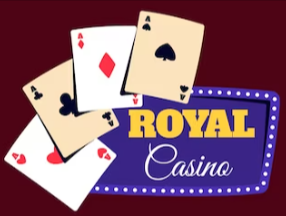Becoming the Dream Player
Who is the perfect casino player? Is it someone who wins often, plays every day, or bets big? Surprisingly, none of these alone define the “ideal” player. In fact, the most valuable player to a casino is not necessarily the high roller, but the one who unconsciously fits a behavioral profile optimized for engagement, predictability, and retention.
At Spinanga, understanding this “ideal player” has become more than theory – it’s a data-informed model that shapes design, promotions, and player experiences. But here’s the catch: most people eventually become this player, often without realizing it.
This article reveals what the ideal casino player truly looks like and explores the hidden psychological mechanics that lead nearly everyone down the same behavioral path.
The Ideal Player Profile: More Than a Big Spender
Behavioral Traits Over Bankrolls
Casinos don’t just look for wealthy players – they want consistent ones. The ideal player is:
- Emotionally engaged
- Responsive to game mechanics
- Willing to play regularly, not erratically
- Open to promotions and game variety
Loyalty and Low Resistance
A player who returns frequently and responds well to email nudges, seasonal events, or minor bonuses is more valuable than a sporadic high-stakes gambler. Engagement is gold.
The Psychological Blueprint of the “Perfect” Gambler
Controlled Optimism
Ideal players carry hope, but not recklessness. They believe wins are possible but not guaranteed. This keeps them playing without financial burnout.
Pattern-Seeking Behavior
The ideal player looks for meaning in randomness. They “feel” a pattern in the slots, a rhythm in the roulette. This creates mental involvement – even if it’s illusionary.
Anchoring to Small Wins
They remember small wins vividly and overestimate their frequency. This memory bias helps fuel longer play sessions without requiring major payouts.
UX and Design Choices That Mold Behavior
Spin Mechanics and Dopamine
Slot machines use carefully timed spins and delays to simulate suspense and excitement. These triggers condition user response and deepen engagement over time.
Progress Bars and Leveling Systems
Platforms often use experience bars or tiered loyalty programs. These features give users a sense of progress – turning random outcomes into perceived achievements.
Micro-Rewards and Habit Loops
Free spins, bonus coins, or daily chests aren’t about money. They’re behavioral reinforcements. The ideal player becomes emotionally tied to checking in daily, ensuring long-term retention.
How “Normal” Players Become Ideal Ones
Gamification as Transformation
Players often start casually but evolve into ideal customers as the platform adapts to their behavior. Personalization, habit formation, and social triggers guide this transformation.
The IKEA Effect of Play
Just as we value furniture we assemble ourselves, players value games where they’ve “earned” loyalty rewards, chosen strategies, or completed challenges – even if the outcomes are random.
Escalating Familiarity
The more time someone spends on a platform, the more familiar it feels – and the more trust they build. This reinforces habit, comfort, and investment.
The Role of Controlled Risk
Why Unpredictability Works
The ideal player doesn’t need constant wins – they need potential wins. Variable reward schedules (used in slot games) keep engagement high without over-rewarding.
Embracing Near-Misses
The near-win is a powerful mechanic. It activates brain areas associated with actual victory, pushing players to try “just one more time.” Ideal players react strongly to these moments.
Personality Typing and Predictive Models
Segmenting Players by Behavior
Casinos use player segmentation models to group users by risk tolerance, session duration, and responsiveness. Common types include:
- The Explorer – loves trying new games
- The Collector – obsessed with bonuses and leveling
- The Strategist – focuses on games like blackjack or poker
- The Escapist – plays to avoid stress or boredom
Ideal players often blend traits but share a key quality: emotional investment.
AI and Adaptive Design
Advanced platforms use AI to adjust offers, interfaces, and even game recommendations to encourage optimal user behavior.
Expert Insights on Player Idealization
Dr. Livia Reynolds, Behavioral Economist
“The perfect player is predictable – not because they’re boring, but because they follow known psychological loops. Casinos don’t need whales; they need routines.”
Theo Markopoulos, Senior Casino Analyst
“The conversion funnel is psychological. From trial to habit to identity – it’s engineered. The ideal player doesn’t just enjoy the casino. They feel part of it.”
Emotional Anchoring Through Environment
Sounds, Colors, and Flow
Color psychology and sound design create a euphoric environment. Soft animations, win chimes, and celebratory banners all reinforce positive feedback, anchoring emotion to activity.
Reduced Exit Points
Ideal environments limit frictionless exits. Auto-play, next-game suggestions, and ongoing missions ensure players rarely have a “natural” stopping point.
The Social Mirror: Leaderboards and Community
Competition as Engagement
Leaderboards gamify presence. Seeing your name rise among peers boosts motivation. The ideal player checks rankings and adjusts behavior to improve.
Shared Wins and Community Play
Shared jackpots, public bonuses, and chat rooms create emotional proximity. Players feel part of a story – keeping them engaged longer.
When Ideal Becomes Unaware
Playing Without Conscious Tracking
Ideal players often aren’t aware of how deeply engaged they’ve become. They log in to “relax” or “pass time,” not realizing they’ve followed every step of the engagement funnel.
The “Silent Investor” Effect
Emotionally invested players treat game progression like equity. They’ve “put time in” and feel compelled to keep going – even when rewards diminish.
User Testimonials: Becoming the Ideal Without Trying
Dimitra, 36, Athens
“I used to log in twice a week. Now I can’t sleep until I open my daily chest. It’s silly, but it feels like part of my routine.”
George, 41, Patra
“I never thought I’d care about badges in a slot game. But when I leveled up and unlocked a VIP avatar, I actually felt proud.”
The Ethical Conversation
Behavioral Nudging vs. Manipulation
Where’s the line between engagement and coercion? Ethical platforms are exploring how to keep players informed without breaking the spell.
Responsible Design Principles
Transparency, cooldown reminders, and opt-out features are becoming standard for casinos that want to empower – not exploit – their ideal users.
Breaking the Mold: Can You Be a “Non-Ideal” Player?
Detached Enjoyment
It’s possible to enjoy casino games without falling into deep engagement loops. Detached players:
- Set strict time limits
- Avoid emotional investment in outcomes
- View bonuses as extras, not necessities
Mindful Play as Counterbalance
By recognizing the design, players can enjoy the experience while staying grounded. Awareness is the only true resistance to perfect behavioral modeling.
Conclusion: Everyone Becomes Ideal – Unless They Choose Otherwise
The “ideal” casino player isn’t born – they’re shaped. Through interface psychology, emotional feedback, and reward design, most users follow a path from casual play to routine engagement. It’s a process that feels natural because it’s designed to be.
Platforms understand the formula – and use it to deliver experiences that are satisfying, social, and sometimes hypnotically engaging. But knowing the game behind the game allows users to enjoy with awareness, balance, and control.
In the end, the ideal casino player is the one who enjoys the journey – without losing themselves in the game.

